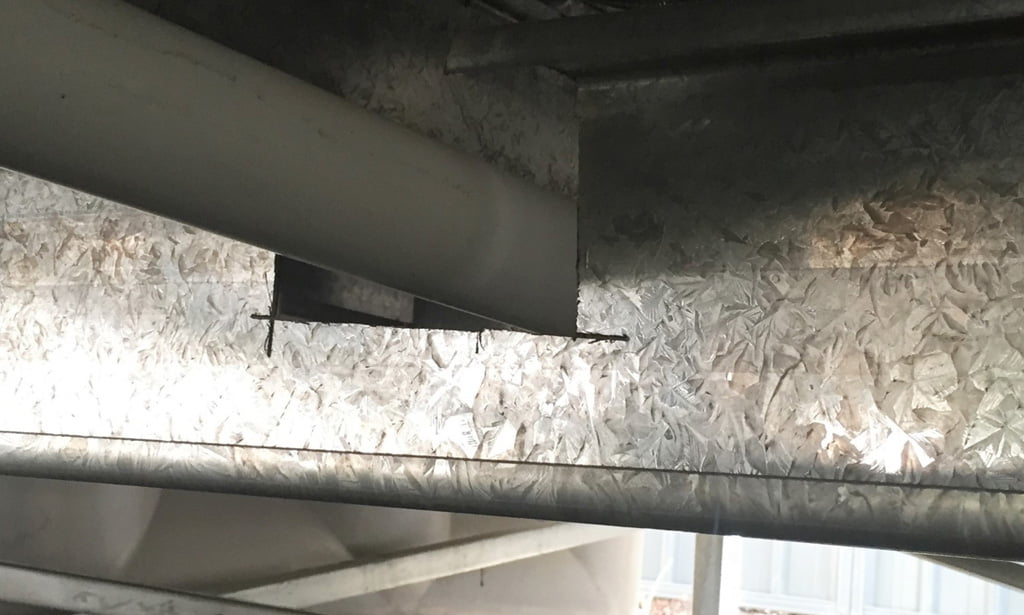I love a good conspiracy theory, whether it’s mind control through fluoridation, 9/11 perpetrated by the CIA or Elvis living in Bondi. These conspiracy theories tend to arise as simple explanations for events or ideas that are too big or too dramatic for us to process properly. It is really hard to grapple with the concept of people walking on the moon so the simpler explanation is that it was a hoax perpetrated by the US government.
In a similar mindset, there is a saying that for every complex problem there is a simple and obvious solution. And that solution is wrong. Our politicians are some of the best exponents of the simple-but-bogus solution. In its simplest term, their message is “vote for us and all problems will go away.” And of course they don’t.
Engineers do it too; I recently had cause to check whether a hole in the side of a joist was acceptable. I thought there would be a simple way of working this out. Superficially the engineering is that sort of thing I do every day and really shouldn’t be a problem. I was wrong.
There are of course allowable criteria for holes as shown in Australian Standard 1684. However, these are for very restricted hole sizes and locations. And of course, the necessities of passing services often dictate a need for larger holes outside the limits of the code.
My example was outside the code limits. The challenge, I thought, was to use some fairly simple engineering theory to calculate effects of the hole. You see almost all timber beams, whether rafter’s, joists, lintels etc are not working anywhere near their maximum strength. Rather their design is governed by deflection. And holes have a negligible effect on deflection. So potentially you can get away with some quite large holes without compromising the beam’s strength and safety.
And even in the odd case of a member which is strength-governed only limited regions will have the maximum stress. So once again there is a potential to have some significant holes in the timber outside the limits in the code. Easy, I thought.
The fly in the ointment is a weird thing called fracture mechanics. A simple manifestation of it is that a piece of paper with a slight tear has a dramatically reduced strength.
That is because at the point of the tear there are very high stresses. This phenomenal has brought down more than one aeroplane. And in fact because timber is a natural material with microscopic defects, any failure in the end is pretty much a fracture mechanics failure.
So, the problem is that the hole is sort of like the start of a tear – albeit a very blunt one. There are increases and stresses around the hole and these interact with the natural defects in timber and all of a-sudden the situation gets complicated.
I’ve just spent half a day doing research for this article – looking at various scientific articles. I found lots of cool stuff written by geeky engineers whom I sure have Coke-bottle glasses and poor hygiene habits. But I found squat that is usable at a practical level.
The bottom line: if you have a hole outside the allowable limits of AS1684 there is a better-than-even chance that it’s okay. But that’s not guaranteed and I don’t know a straightforward way to check it.
For me, personally, when I am next presented with this question I will check that the hole is not in a critically stressed region and that there are no significant timber defects near the hole. Then, for luck, I will reinforce the hole to prevent splitting along the grain. Anti-split nail plates or glued and nailed ply would be the way to go.
And to show that the problem of how to install services is not unique to timber, take a look at the photograph which shows a butchering of a steel C-section floor bearer. I’ve seen a lot of really bad construction over the years, but this would have to be one of the worst. But if you think this is bad you should see what they did to the concrete slab!
If you really are a conspiracy theorist you should check out the website dhmo.org. The website will tell you that DHMO or Dihydrogen Monoxide (DHMO) is a colourless and odourless chemical compound also referred to as Hydric acid. DHMO is a constituent of many known toxic substances, diseases and disease-causing agents, environmental hazards. Thousands die every year due to the lethality of DHMO.
Some of the well-known uses of Dihydrogen Monoxide are as an industrial solvent, in nuclear power plants, by elite athletes to improve performance, in biological and chemical weapons manufacture and in the development of genetically engineering crops. It was even used by Kennedy’s assassin on that fateful day.
And DHMO is of course… water!
Don’t believe everything you read on the net!
Paul Davis is an independent structural engineer managing his own consulting firm Project X Solutions Pty Ltd. The views in this column are Paul’s and do not reflect the opinions of TimberTrader News.
Phone: 02 4576 1555 Email: pauldavis@timbernews.com









